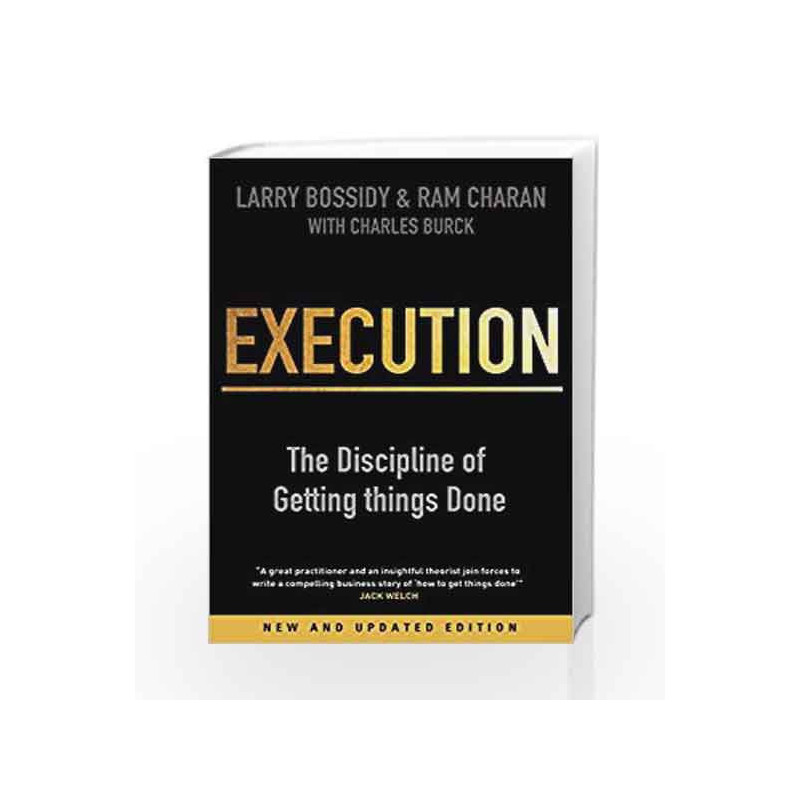Introduction
Execution is based on the phenomena of strategy, leadership and ultimately, execution in the real corporate world. An ideal book for any leader to improve its performance or any subordinate looking up to become a leader.

The book consists of three parts differentiated as:
- WHY EXECUTION IS NEEDED
- THE BUILDING BLOCKS OF EXECUTION
- THE THREE CORE PROCESSES OF EXECUTION
Summary
PART I
When Planning and strategy is not executed effectively, the blame game starts and problem solving gets lost. In the book, execution is identified as ‘the missing link between aspirations and results’. Bossidy identifies three key points to consider when thinking about execution:
- Execution is a discipline, it’s a critical component of the strategy.
- The business leader is responsible for encouraging and promoting execution.
- Execution needs to be at the core of an organisations culture.
Part of executing means that you need to be in a position to understand the business environment and the organisations capabilities. You need to be able to make assumptions and forecasts. Execution requires the ability to link strategy + operations + people who are going to execute the strategy. Strategies most often fail because they aren’t executed well. Things that are supposed to happen don’t happen.
Too many leaders fool themselves into thinking their companies are well run. They’re like the parents in Garrison Keillor’s fictional Lake Wobegon, all of whom think their children are above average. Then the top performers at Lake Wobegon High School arrive at the University of Minnesota or Colgate or Princeton and find out they’re average or even below average. Similarly, when corporate leaders start understanding how the GE’s and Emerson Electrics of this world are run—how superbly they get things done—they discover how far they have to go before they become world class in execution. Execution is a systematic way of exposing reality and acting on it.
A leader who executes is someone who is constantly analyzing the gap between the actual results and the desired results of any strategic plan. By learning from this gap they can take their knowledge onto the next project and make significant improvements. Unless you translate big thoughts into concrete steps for action, they’re pointless. Without execution, the breakthrough thinking breaks down, learning adds no value, people don’t meet their stretch goals, and the revolution stops dead in its tracks.
PART II
Seven essential Behaviour of a leader:
- It’s so important that a leader is in touch with who they work with and the current business climate.
- Rather than avoiding the truth a great leader needs to embrace the truth.
- Leaders need to be setting goals and priorities. It’s a good idea to focus on a few key goals that the entire team can focus on.
- Never be someone who has a lot to say but never puts anything into action.
- A leader must have the ability to reward people. In doing so you encourage your team to work hard and achieve results.
- Pass on knowledge, always be expanding other peoples capabilities.
- It’s important that leaders are self-aware, have humility and are authentic.
By changing people’s behaviours, you are having a direct impact on the results they produce. So it’s important to ensure that the behavioural changes you encourage, promote a positive outcome. Bossidy explains that behaviours are the outcome of beliefs being turned into action. He emphasises the importance of developing people within your company. Whether it be providing experiences, learning opportunities, feedback, coaching education or training.
PART III
People Process
People are at the core of any business, they are the ones that make decisions and create strategies. It’s absolutely critical that the right people understand how to translate the strategy into an operational reality.
Strategy Process
Strategies all have a common, ground-level goal: to win over the customers and establish a competitive advantage. Proper preparation and strategizing is important and the next process is to execute them well. A contemporary strategic plan must be an action plan that business leaders can rely on to reach their business objectives. Developing such a plan starts with identifying and defining the critical issues behind the strategy.
Operation Process
Everyone involved needs to be responsible for constructing the operations process. This isn’t purely the job of a leader. Bossidy identifies synchronisation as a critical part of the execution process.
About the Authors
- Born on march 5, 1935 in Pittsfield, Massachusetts (Aged 86).
- Graduated from Colgate University.
- His wife’s Name is Nancy.

- Chief operating officer of General Electric Credit Corporation from 1979 to 1981.
- From 1991 to 1999, Bossidy served as chairman and CEO of Allied Signal Corporation. He became Chairman of Honeywell Corporation when Honeywell was acquired by Allied Signal in 1999.
- He has 9 children and 31 grandchildren.




